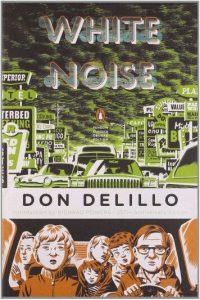
 Literature Guides
Literature Guides
Themes of White Noise
Fear of Death
The novel portrays characters who are unusually preoccupied with the fear of death. Yet, the threat of death pervades the novel. White Noise plays with the unreality of death even in the face of real death. A feature of postmodernism is the inability to completely grasp the reality of life since life is completely over-run with simulations. Jack ruminates on death in ways which are comical. However, he is in fact caught in the airborne toxic event and exposed to the chemical.
Still, his recognition of this fact is utterly ridiculous and unreal. Babette takes Dylar to ward off her fear of death. But the most elemental feature of being a human is the fear of death. Dylar is drug which would render her inhuman in her attempt to feel more human. In the end, Wilder, the youngest child, rides his tricycle fearlessly and unknowingly toward death and survives. Death is both real and unreal in White Noise.
Simulation versus Reality
Another feature of the postmodern condition is the blurred line between simulation and reality. The novel takes this on in multiple ways. Jack’s moment at the ATM is one in which his basic humanity is tested ad validated against a computer leaving us wondering which is more real. The airborne toxic event is quite real but the characters treat it like it is a simulation for something which could be real.
Even the emergency responders are operating as if the event is a drill for a real event as they respond to a real event. Death is never a reality to anyone. It is only an abstraction. The characters treat death as a symptom of life rather than something real.
Popular Culture
Murray Siskind has made a career out of studying popular culture. Jack’s department of Hitler studies operates as a legitimate academic department even though it is more of a dodge for Jack to portray himself as important. The sounds of television and radio, the endless stream of commodities at the supermarket—everything that surrounds daily life as features of popular culture serve to crowd out and undermine the very idea that there is something other than popular culture.
Scholars are purveyors of popular information. Popular information is treated as the subject of scholarly study. There does not seem to be anything to life but pop imagery and pop culture.
“The most photographed barn in America”
Possibly a central image in the novel. The most photographed barn would seem to be the image of Americana. Yet it is diminished in every way by being nothing but image. Murray talks about the barn as the symbol of an America that no longer exists except as images of images. The barn as image of America is the image of an empty world, devoid of any substance. People come to photograph the barn because there is no sense of reality in life at all. They seek reality in an image of a reality which no longer exists. This is the central postmodern symbol in the novel.



